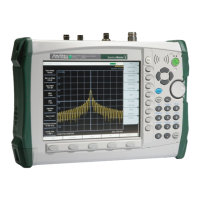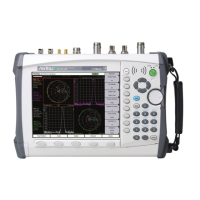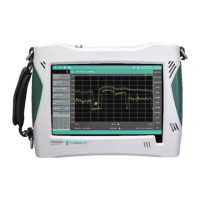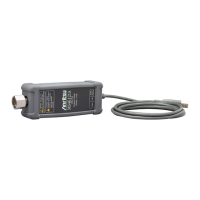B-10 PN: 10580-00321 Rev. M S331L UG
B-2 Glossary Terms Glossary of Terms
LRL : Line Reflect Line (LRL, also called TRL) method
of calibration developed by Anritsu. LRL uses two
(or more) transmission lines and a reflect
standard (for each port). The line lengths are
important because the two lines look electrically
distinct at all times (meaning it will not work at
DC, nor at a frequency where the difference in
length is an integral number of half wavelengths).
The reflect standard is not too important because
it is only assumed to be symmetric (the same at
both ports) and not too high a return loss
(practically speaking, even 20 dB return loss will
usually work). The lines are assumed to be
perfect, with no mismatch, which usually means
airlines for coaxial calibrations, although other
structures can be used. On-wafer transmission
lines can usually be very good, and this cal
approach will work well if one can handle the
required probe movement.
LRM : Line Reflect Match (LRM) method of calibration
developed by Anritsu. In LRM, one of the lines of
the LRL method is replaced with a match (or
load). For basic LRM, the match is assumed to be
perfect, and thus represents a line of infinite
length. For cases where the load is well
understood, improvement in accuracy can be
achieved by using ALRM and incorporating the
load model. So in some sense, this cal relates back
to the concept of the defined standards. Because
only one line is involved, this calibration can work
down to DC and up to very high frequencies
(practically limited by the match
knowledge/characterization). Some variations
allow one to trade one of the match measurements
for a pair of additional reflect measurements (a
second reflect standard is needed). Because of the
requirement (in this case) that the reflect
standards be distinct, the calibration may become
band limited.
MHz : Megahertz (MHz) - One MHz is equal to one
million Hertz, and is a measurement of frequency.
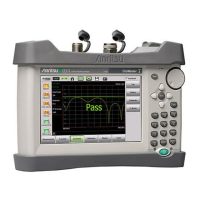
